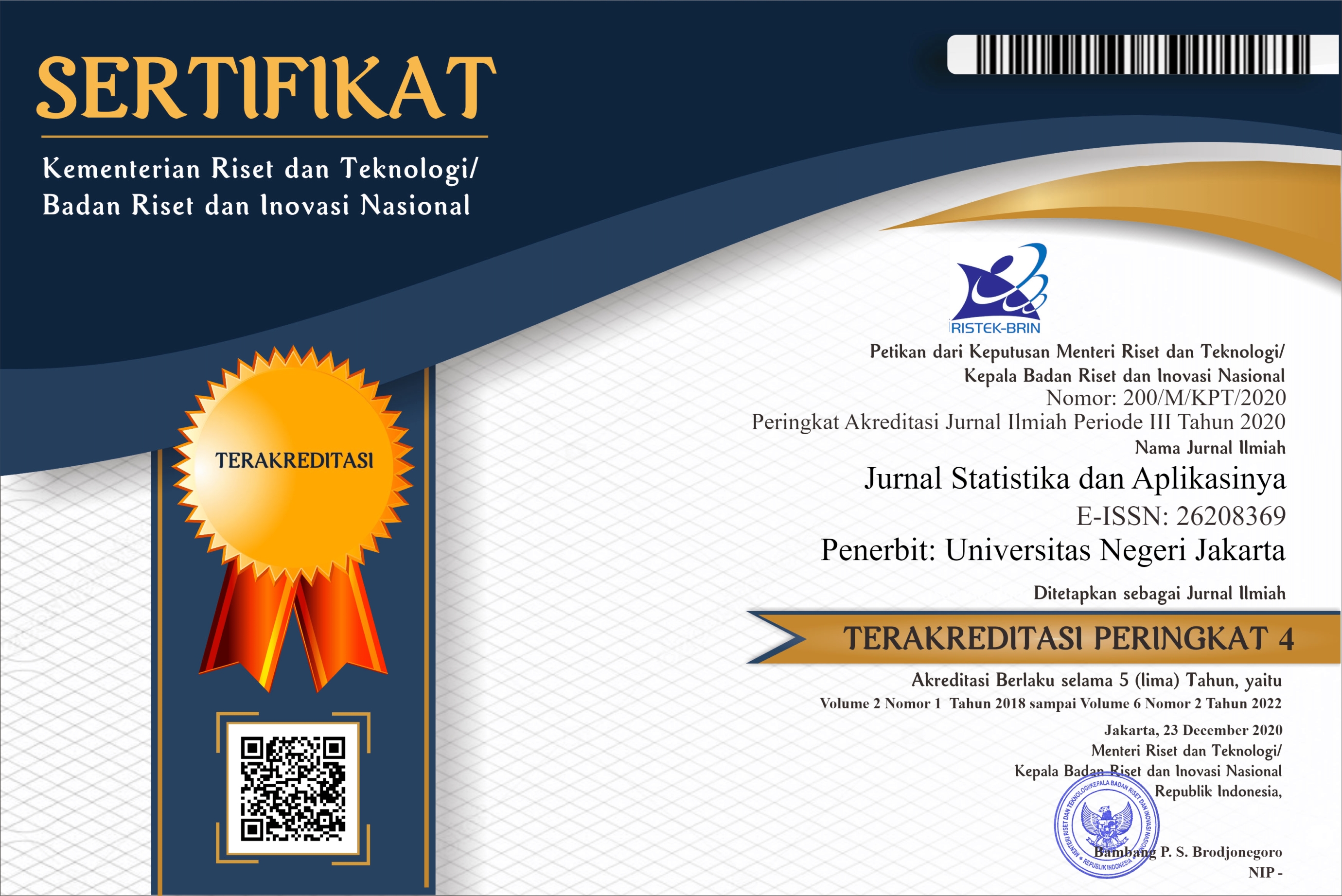Klasifikasi Pemilih dalam Pemilu 2019 di Indonesia Menggunakan Regresi Logistik Multinomial dan Chi-Square Automatic Decision Tree (CHAID)
DOI:
https://doi.org/10.21009/JSA.06201Keywords:
chi-square, classification, election, multinomial logistic regressionAbstract
General Elections (Elections) in Indonesia are conducted once in every 5 years. This paper focused on the election of the president and his representatives. Voters in elections are regulated by law. There are many aspects of voter’s background that influence voters in making decisions during elections. In this paper, the focus is on voter background factors in geographical, demographic, and socio-economic aspects. The geographical aspect is the region where voters live; demographic aspects are gender, age, recent education, marital status, and religion; socioeconomic aspects are the household expenses, household income, personal expenses, type of work, type of residence, and status of residence. There are 3 categories of voter decisions in the election, namely candidate pair A, candidate pair B, and refuse to vote. The objectives of this paper are to find out what variables significantly influence voters in making decisions during elections, and to classify voters based on the significance of variables in geographical, demographic, and socio-economic aspects related to voter choice in elections. Multinomial logistic regression analysis is used to answer the first objective, while the CHAID (Chi-Square Automatic Decision Tree) decision tree is used to answer the second objective. Through multinomial logistic regression analysis, it can be seen that the variable type of region, age, recent education, religion, household expenditure, household income, house type and home status influence voter decisions in elections. Through the CHAID decision tree, the results obtained are 5 types of voters based on a decision tree of several independent variables that are significant to the dependent variable.






